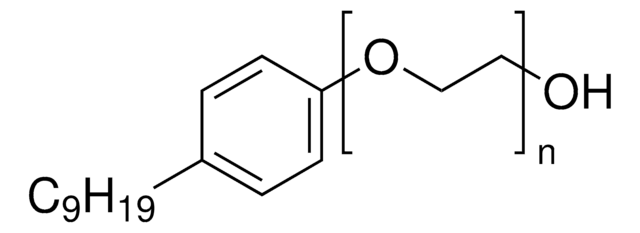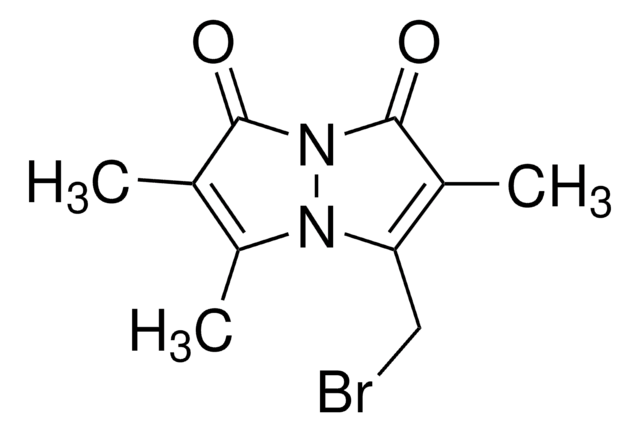38132
N-(5-Fluoresceinyl)maleimide
≥90% (HPLC), BioReagent, suitable for fluorescence
Sinónimos:
5-Maleimido-fluorescein
About This Item
Productos recomendados
product line
BioReagent
Quality Level
assay
≥90% (HPLC)
fluorescence
λex 490 nm; λem 518 nm in 0.1 M Tris pH 8.0
suitability
corresponds for coupling to thiols
suitable for fluorescence
storage temp.
2-8°C
SMILES string
Oc1ccc2c(Oc3cc(O)ccc3C24OC(=O)c5cc(ccc45)N6C(=O)C=CC6=O)c1
InChI
1S/C24H13NO7/c26-13-2-5-17-19(10-13)31-20-11-14(27)3-6-18(20)24(17)16-4-1-12(9-15(16)23(30)32-24)25-21(28)7-8-22(25)29/h1-11,26-27H
InChI key
AYDAHOIUHVUJHQ-UHFFFAOYSA-N
¿Está buscando productos similares? Visita Guía de comparación de productos
Categorías relacionadas
General description
Application
N-(5-Fluoresceinyl) maleimide (5-FM) is used to fluorescence label molecules such as proteins and peptides via their thiol groups.
Packaging
Certificados de análisis (COA)
Busque Certificados de análisis (COA) introduciendo el número de lote del producto. Los números de lote se encuentran en la etiqueta del producto después de las palabras «Lot» o «Batch»
¿Ya tiene este producto?
Encuentre la documentación para los productos que ha comprado recientemente en la Biblioteca de documentos.
Nuestro equipo de científicos tiene experiencia en todas las áreas de investigación: Ciencias de la vida, Ciencia de los materiales, Síntesis química, Cromatografía, Analítica y muchas otras.
Póngase en contacto con el Servicio técnico







